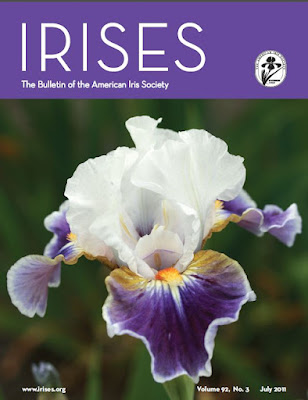
'Cardinal' is a tall bearded iris, around 40 inches in height, which blooms mid-season and stays late.
From the Indian Spring Farms catalog for 1928:
"Dominion Seedling. One of the richest flowers of the Dominion race that carries the perfect form and velvety texture of its parent to greater height on low and widely-branched stems. S. a distinct shade of lavender, overlaid with rose, erect and arching inward at the top; F. rich raisin-purple, very broad and rounded, and of wonderful glossy texture. A rich, bright Iris that gives a beautiful color effect with transmitted light."
From J.C. Nicholl's Irises catalog for 1928:
"S. lavender overlaid rose, broad and beautifully arched. F. circular, rich prune purple, very velvety. Wonderful texture, and spledidly branched. Grows well and is extremely floriferous. Many consider this Dominion seedling the best Iris in the world. It is certainly one of the most sought as the supply cannot catch up with the demand, in spite of the price remaining around $20.00."

Arthur John Bliss lived in a small and out-of-the-way village known as Morwellham, in the west of England. He retired early due to deafness and spent the remainder of his days gardening and hybridizing irises. His 'Dominion' is widely considered to be responsible for the tetraploid revolution in bearded irises of the 1920's. Mr. Bliss made many beautiful creations, and 'Cardinal' was one of his most beloved. You can see why. The color is delicious, the flaring form perfectly lovely, it is hardy and vigorous and it blooms for a long period. It has left a rich legacy in the history of irises and has been in the background of many top award winners thru the decades. 'Cardinal' is truly an iris classic - as good today as it ever has been.

















